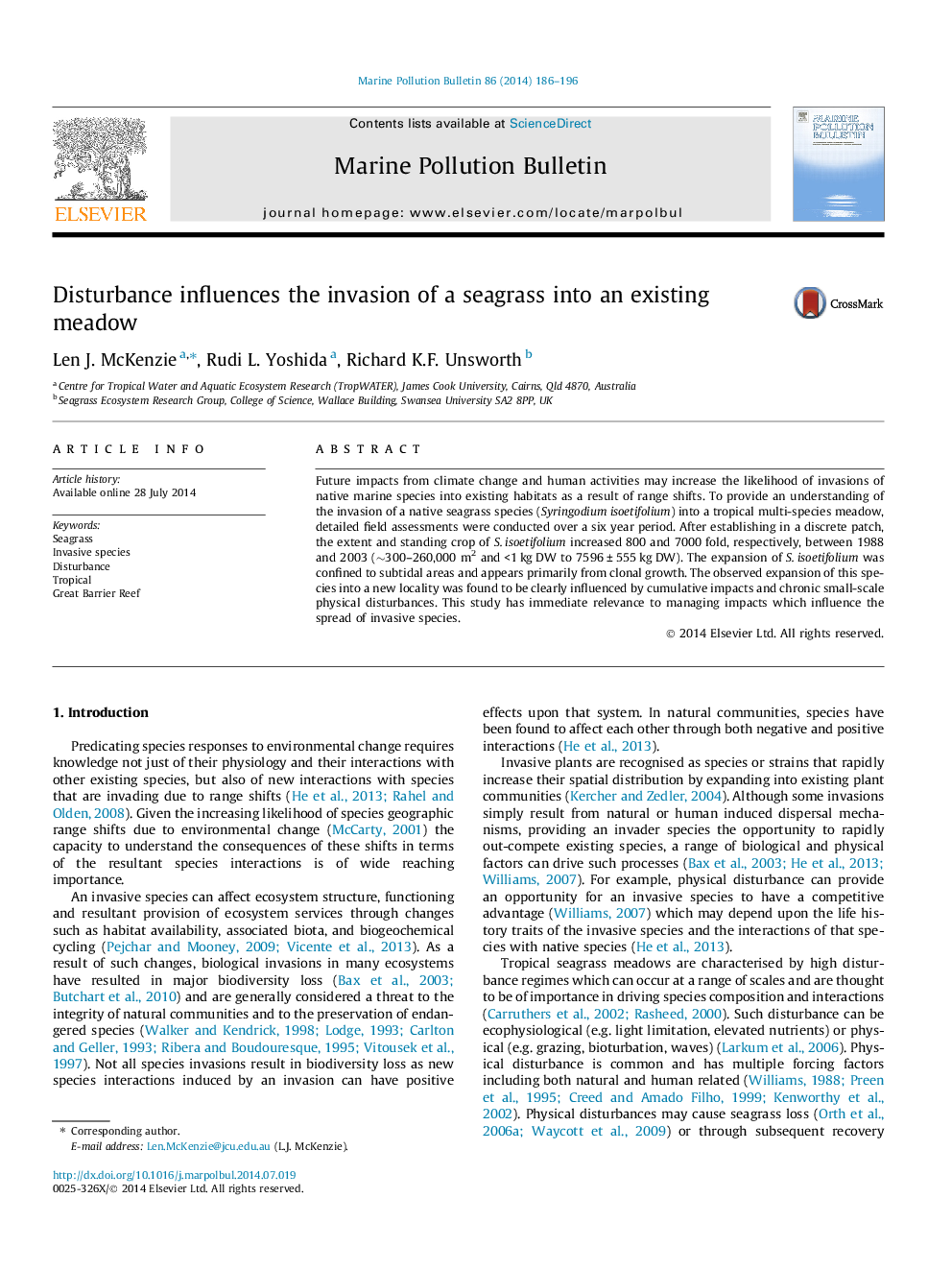| Article ID | Journal | Published Year | Pages | File Type |
|---|---|---|---|---|
| 6357728 | Marine Pollution Bulletin | 2014 | 11 Pages |
â¢We quantified changes in the extent and standing crop of an invasive native seagrass.â¢Syringodium extent increased 800 fold and the standing crop 7000 fold over 15 years.â¢Chronic small-scale disturbances may facilitate Syringodium isoetifolium invasibility.â¢Native seagrass invasions may increase with range shifts due to climate change.
Future impacts from climate change and human activities may increase the likelihood of invasions of native marine species into existing habitats as a result of range shifts. To provide an understanding of the invasion of a native seagrass species (Syringodium isoetifolium) into a tropical multi-species meadow, detailed field assessments were conducted over a six year period. After establishing in a discrete patch, the extent and standing crop of S. isoetifolium increased 800 and 7000 fold, respectively, between 1988 and 2003 (â¼300-260,000 m2 and <1 kg DW to 7596 ± 555 kg DW). The expansion of S. isoetifolium was confined to subtidal areas and appears primarily from clonal growth. The observed expansion of this species into a new locality was found to be clearly influenced by cumulative impacts and chronic small-scale physical disturbances. This study has immediate relevance to managing impacts which influence the spread of invasive species.
